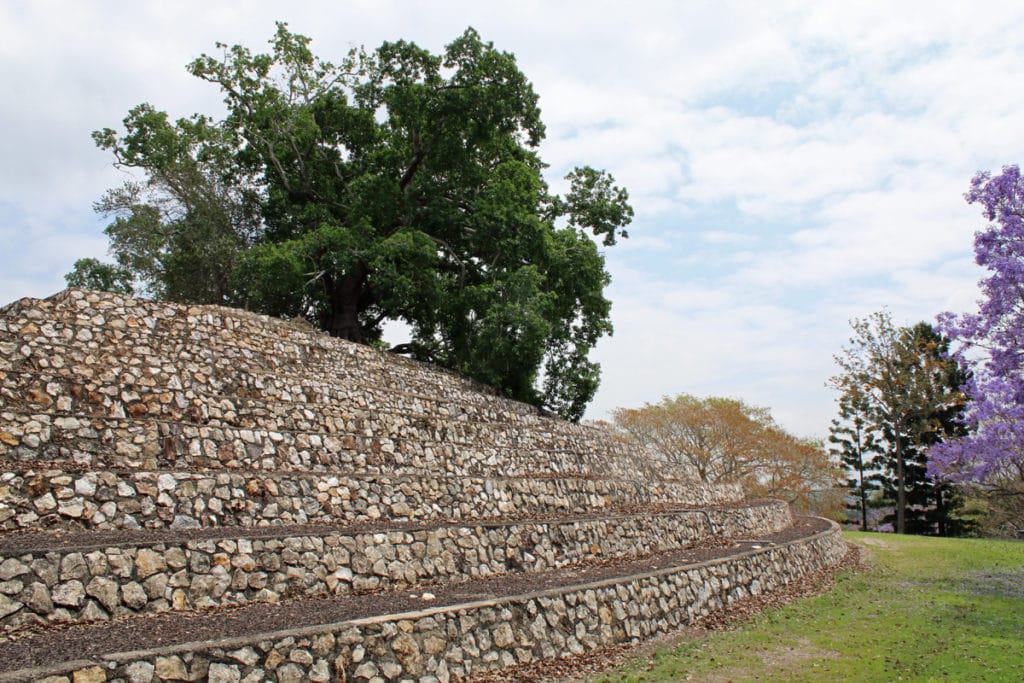It’s hard to miss the pyramid-like structure across from Queens Park on the main drag into Ipswich but why exactly is it there and what is it all about?
Known as Cunningham’s Knoll on Limestone Hill, the terraced rock gardens date back to the days of the Great Depression.
Their purpose was twofold – to generate much-needed work for locals at a time of very high unemployment and honour renowned botanist and explorer Allan Cunningham.
A monument at Cunningham’s Knoll proclaims it was erected to “perpetuate the memory of explorer Allan Cunningham who camped under these fig trees in the year 1828”.
Despite the proclamation, some historians believe the steep nature of the hill meant it was unlikely Cunningham, who was travelling with convict servants and two bullocks, pitched a tent directly under the tree, but there was no doubt he visited the site.
In 1828 Cunningham stayed in Ipswich for five days, during which time he took compass bearings of the distant mountains before going on to discover what is now known as Cunningham’s Gap.
As well as the tribute to Cunningham, a second monument at the knoll honours Thomas Glassey.
Glassey was an industrial and social reformer, Labor member of the Queensland Parliament and a Commonwealth Senator remembered as a “fearless humanitarian”.
Adjacent the rock terraced gardens also sits the Old Hummock Limestone Residue. It recognises Captain Logan’s decision in 1827 to send an overseer and five convicts to quarry limestone at the site.
This was sent in small boats to Brisbane for use in construction. In the years that followed free settlers began arriving in the area.
Cunningham’s Knoll prior to the rock terraces being constructed.
Cunningham’s Knoll in 1952. Photo courtesy Picture Ipswich.
Cunningham’s Knoll is on Queen Victoria Parade.
The monument honouring Thomas Glassey.
The Old Hummock Limestone Residue.

